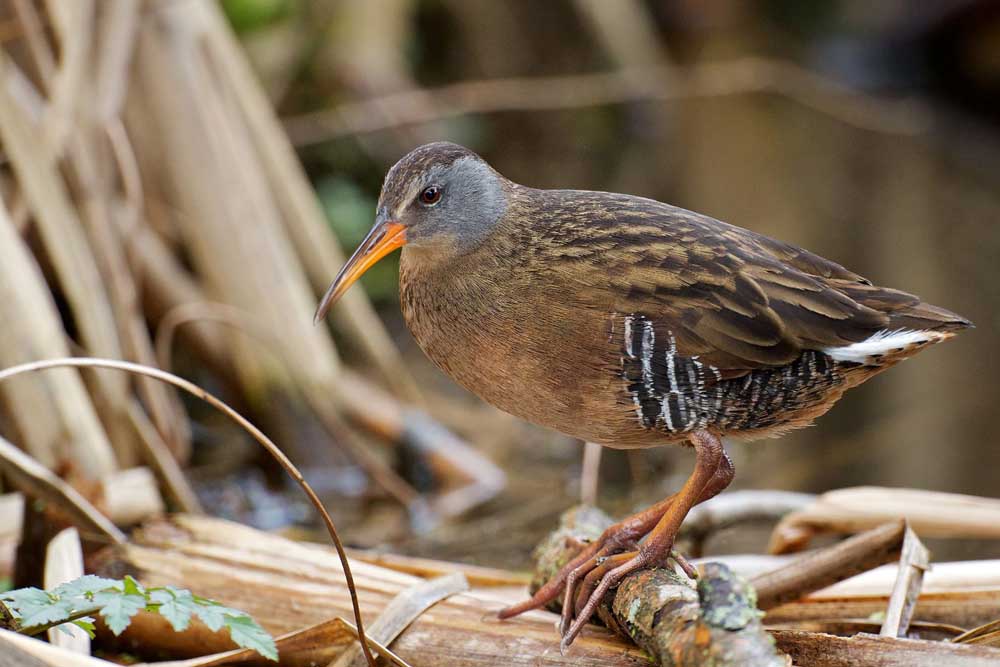Northwest Nature Log Art and ethics of calling birds with a cellphone
Published 12:18 pm Tuesday, April 28, 2015

- Virginia rails like this one may have been named because they are so thin when viewed head-on.
Now that spring is officially here, I’m waiting to hear the call of the Virginia rail across the water. Since I live next to a lovely, dense marsh, I’m in prime rail territory.
Trending
Rails are described in some bird ID books as skulking, chicken-like wading birds. They do a lot of skulking in the shallows and have a sort of chicken-like profile. It’s unusual to actually see a rail, as they prefer to stay hidden in the dense marsh grasses, but their odd, repetitive call can be heard echoing up and down the waterway in the warm seasons. My reference book tells me that they are called rails because if you look at one straight on, he is as thin as a rail.
One of the only times I’ve seen our local rail came as a total surprise. It also came with a lesson. iPhone users can purchase some wonderful birding “apps” which help identify birds by showing drawings and photographs. A swipe of the finger provides distribution information, in-depth descriptions and best of all, a recording of the bird’s call.
One warm spring day last year I heard a rail begin his clucking call across the water, deep in the reeds and yellow iris. Just out of curiosity, I took my phone outside, dialed up “Virginia rail” and began the call.
Trending
This time of year, birds are very hormonal. This guarantees more birds for the future. You’ve probably seen exhausted mallard hens running and flying away from over-attentive drakes. Well, the same goes for all birds, some more so than others.
As I held my clucking phone toward the area where I’d heard the rail sing, out he flew, straight over the water into my yard. At the last minute he realized his folly and scuttled to safety under a rhododendron. That’s where my lesson came in. If I had a dog or an outside cat, that bird would have been lunch. He had abandoned caution and simply reacted to the call of another rail. In his world, this was either a potential mate or another male invading his territory. I guiltily skulked inside, and the rail fluttered low over the water back to the protection of the marsh.
Some birding trip guides are no banning the use of taped calls just for this reason. Playing the call has become quite popular because it’s a very good way to pull in a bird. The birds, usually males, get very stirred up reacting to a perceived invader or mate. I’ve seen tiny yellow mangrove warblers literally spin in circles in frustration, looking for the bad guy. If this happens to a bird only occasionally, it’s probably harmless. But if a rare bird is found and the crowds descend, the bird can become exhausted from the stress of reacting to almost constant taped calls. It’s become part of most “birding ethics” lists: think of the bird, not your list. Don’t play calls. It’s a good thing for the birds.
Closer to home, the first gaggle of mallard ducklings has appeared with a very attentive hen watching over. Little golden and black puffs, still heedless of the dangers of their world, they dart around in the April rain. A fat nutria sits at the pond’s edge, slowly chewing a stick and staring off into the middle distance. A hunting eagle wouldn’t go amiss here. Overhead, two ospreys, recently returned, cheep to each other as they wheel over the water. The morning song of birds, called the dawn chorus, begins earlier each day, usually with a sleepy robin giving his liquid chirrup to begin.
Go outside; savor the returning warmth, greenery and life.








